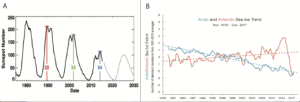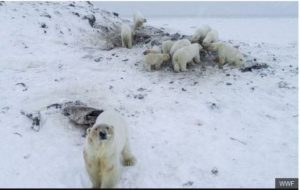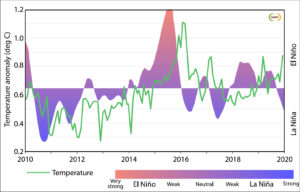by Cap Allon, Dec 13, 2020 in Electroverse
On December 13 & 14, 2009, professor, prophet, and soothsayer Al Gore predicted the North Polar Ice Cap could be completely ice free within the next five to seven years.
Gore made his prediction at COP15 Copenhagen which ran from Dec 7 – Dec 18, 2009, where he repeatedly referenced “state-of-the-art” computer modeling to suggest that the north polar ice cap may lose all of its ice by 2014.
“Some of the models suggest that there is a 75 percent chance that the entire north polar ice cap, during some of the summer months, could be completely ice-free within the next five to seven years,” Gore claimed.
“Join me in asking president Obama and the US Senate to set a deadline of 22 April for final action in the US Senate,” he said. “I do not believe we can wait till next November or December.”
The Guardian wrote on Dec 16, 2009 in an article entitled “Al Gore rallies the troops in Copenhagen“:
[Gore] kept up the pace by calling for the international community to sign up to a fully fledged climate change treaty by July 2010 – and then announcing that Mexico was prepared to host a deal-making summit.
He scolded rich countries for demanding the developing world offer evidence of emissions cuts while at the same time trying to inflate the funds they were prepared to offer poor countries to deal with climate change. And he was just as tough on activists who have embraced him as a hero, demanding they set aside their pride and their principles and embrace a deal – no matter how imperfect. He said he recognized their frustration with the glacial pace of negotiations. He agreed that cap-and-trade schemes to cut carbon emissions were an imperfect solution – Gore confessed to favoring a carbon tax – but the current efforts for a deal were the best prospect of avoiding catastrophic climate change.
And there was no trace of sympathy for opponents of action on climate change. Gore began with a brief run-through of the latest science on melting of the Arctic ice cap, evidence he said “only reckless fools would ignore.”
…





